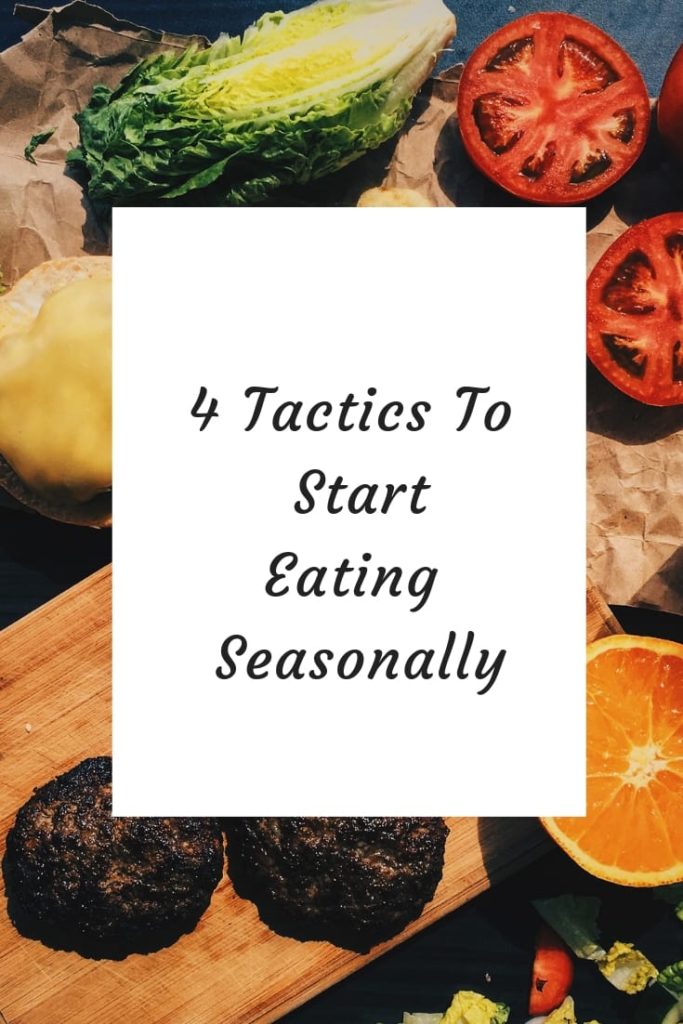Spring is slowly blooming around you. A little more daylight and a few tentative buds on the trees are drawing you into a new connection with the world around you. You feel like you’re coming out of hibernation too. You want to shake off the winter blues and deepen your relationship with the earth and your body.
A great way to reconnect with the earth and your body is adopting a practice of eating seasonally. Eating seasonally doesn’t mean giving up all the things you love ten months out of the year. Instead, it means mindfully choosing foods that are in tune with the seasons and what mother nature has to offer.
Seeking out what’s in season in your area doesn’t have to create a lot of extra work for you. Choosing to sign up for a CSA share makes it very easy. CSA stands for Community Supported Agriculture. You pay a farmer a set price for a weekly share of the harvest. They get a steady income and you get the best of what they grow. Or you can visit your local farmers market for a portion of your regular shopping. I love starting my Saturday with a visit to Farmers Market of the Ozarks for veggies, whatever fruit is in season, fresh baked goods, local honey and the occasional vegan pizza crust.
Why you should try eating seasonally
In Traditional Chinese Medicine (TCM), the warming and cooling properties of food (the thermal nature of food) is used to help bring balance back to the body. Aligning what happens naturally when the season changes with what you put in your body will help it function optimally. As the weather warms up, it is better to include more foods with cooling energy like spinach, mushrooms and watermelon. Click here for more examples of TCM cooling foods.
Ayurvedic medicine also advocates eating seasonally to not only help balance the body but also to strengthen the immune system and improve digestion. The freshness of local food, according to Ayurveda, is less stressful to our digestive system and give us more prana, or life force. Spring is the perfect time to eat bitter or light greens like arugula or microgreens to help throw off the dull heaviness of winter, according to Ayurvedic medicine.
Eating seasonally can also help your budget. When zucchini and carrots are plentiful in local gardens, the prices tend to be less than the local grocery store, especially if you shop organic. A CSA share can also be a bargain for the bounty of produce it supplies. Plus paying ahead for your box of veggies might inspire you to cook at home more too. If you need some inspiration, the cookbook Salad Samurai is organized by season. The Asparagus Pad Thai is a delicious spring choice.
Eating what is in season and grown locally can also be better for the planet. If your spinach doesn’t have to travel from California, that’s a big saving on gas. While your local farmer may not be certified organic due to the cost involved, they may follow many organic growing standards. They love to talk about what they do so spend a little time getting to know how your local farmer does their job.
Finally, eating seasonally is a great way to create an adventure. If you get a CSA share, you may be challenged to finally learn what to do with kohlrabi. Going to the farmers market before you make your Hy-vee order can inspire a meal plan loaded with veggies. Take the kids to the farmers market and let them decide what’s for dinner tonight. Let them see where their food comes from and how much fun shopping, planning and cooking can be.
If you’re ready to find your natural rhythm again and get in tune with the world around you, start a practice of eating seasonally. Start small and give yourself permission to explore a whole new world of flavors. If you’re really inspired, you might even try growing something of your own this year. Drop by Farmers Market of the Ozarks and ask the experts when the best time is to plant your tomato plant or herb garden.





